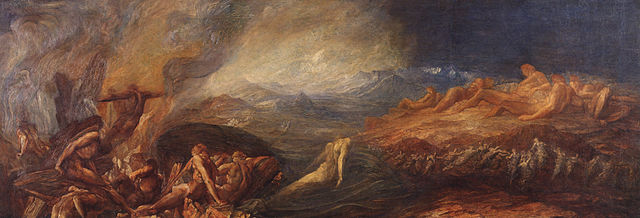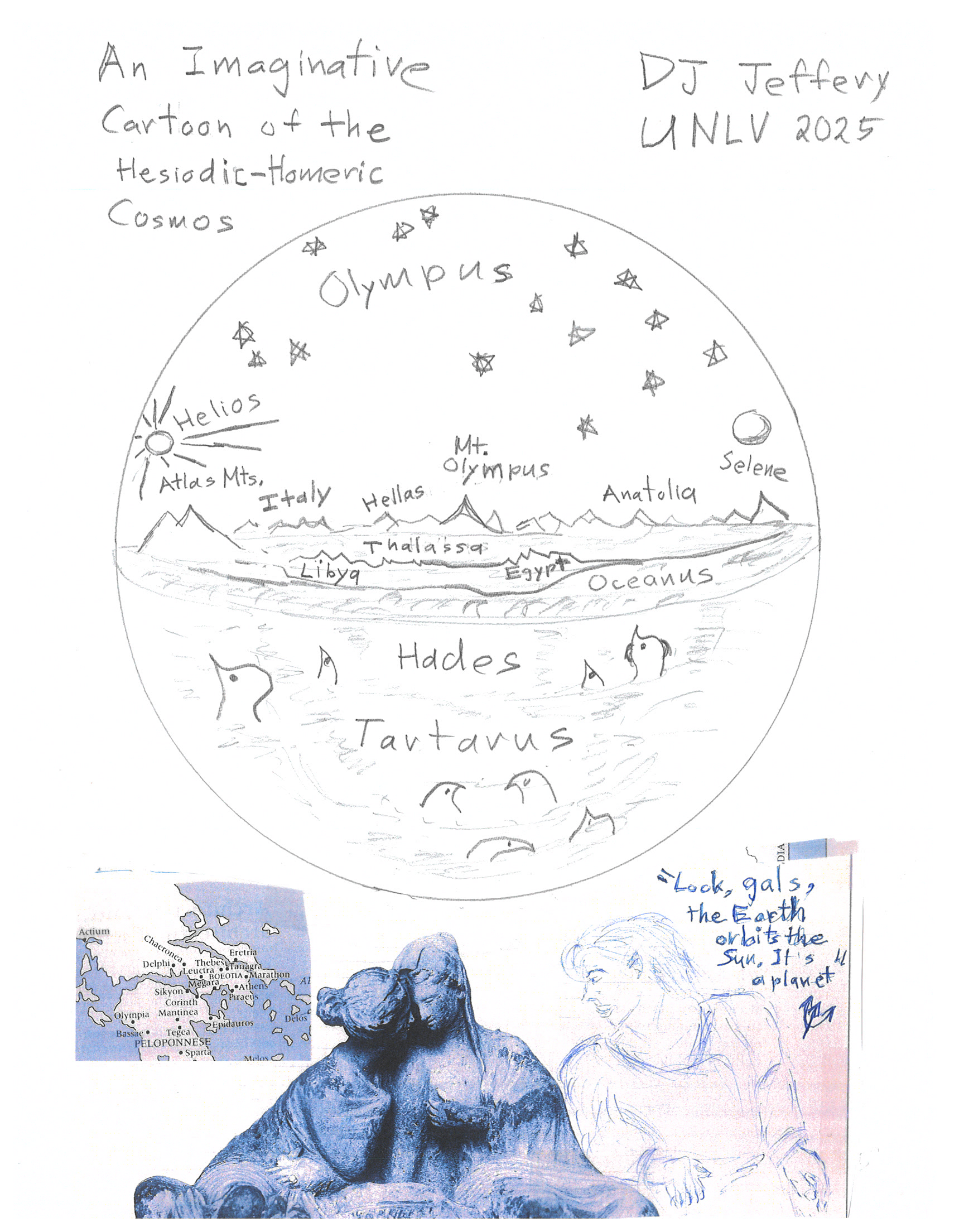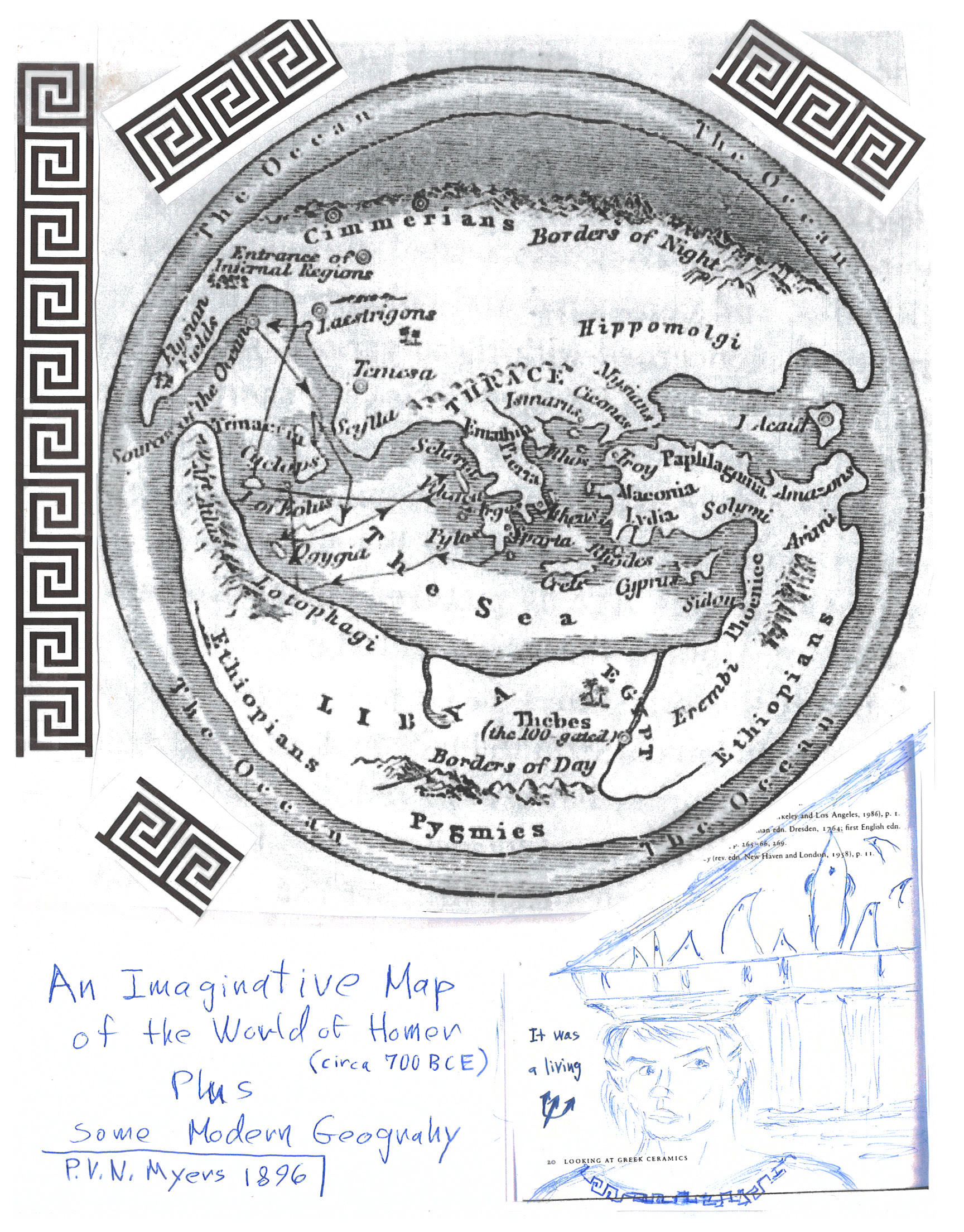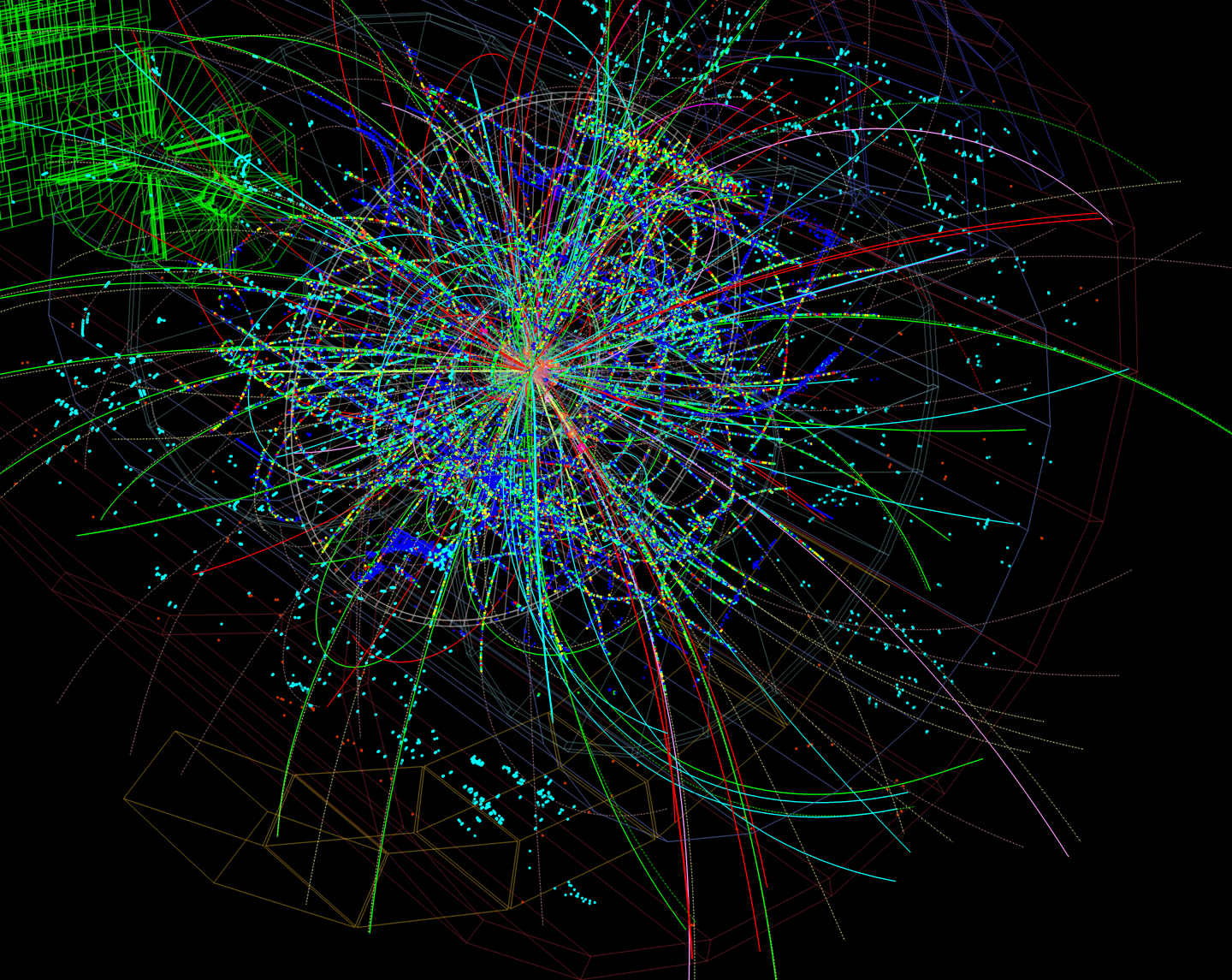
Image 1 Caption: An image from Apollo 11 (1969).
In Hesiod's (fl. c. 700 BCE) Theogony, Chaos is the first primordial god and then appeared Gaia (the Earth).
But Chaos is NOT chaos (disorder) NOR physics chaos, but emptiness, nothingness, void, the abyss. The ancient Greek word in this context is the origin of the word chasm.
But Hesiod's
Earth predated the
spherical Earth theory
of, probably,
Parmenides (fl. c.500 BCE)
(see Ancient Astronomy file:
parmenides_earth.html).
The passage of Theogony that
details the origin of the universe is:
In truth at first Chaos came to be,
Translation:
Hugh G. Evelyn-White (1884--1924).
For text, see
Sacred Texts: Hesiod's Theogony, line 116,
Perseus
Digital Library: Hesiod's Theogony, line 116--,
and the revised translation
Barry F. Vaughan:
Hesiod's Theogony, line 116--.
Nevertheless, Hesiod was probably
close to the pure oral tradition---but
recall, there were probably many pure
oral traditions
and Hesiod selected and ordered those he liked to
create a literary product.
Hesiod also probably got some ideas from
Babylonian mythological cosmology,
but probably very indirectly, and they
probably just supplemented the ideas of
the dome of the sky,
underworld,
and flat Earth and
ocean
that
archaic Greeks (c.800--480 BCE) already had and that
were common in many early societies
(e.g., Norse mythology).
One can interpret the painting
"Chaos" (c.1875)
as a juxtaposition
of creation,
the origin of consciousness,
and consciousness
contemplating universe.
To explicate:
Hesiod definitely says
the Olympian gods
(which are NOT all
Greek gods)
live on "snowy Olympus' peak"
(Theogony, translation
Wender-27, line 118),
but just a few lines later that "starry Heaven"
(Ouranos
the primordial sky god, but also the physical sky)
was the home of the gods.
Homer (c. 8th century), in fact,
sometimes uses Ouranos
and
Olympus
as synonyms for the heavenly home of the
gods
(Wikipedia:
Mount Olympus: Name and mythological associations).
Also, in fact, the
heavenly Olympus
was probably what most
ancient Greeks
thought from c.700 BCE on Wender-169),
while still regarding
Mount Olympus (2917.727 m)
as a sacred place.
Note, Mount Olympus is only ∼ 2900 m
and could easily be climbed in ancient times and when you got there it is was a barren peak
(Wikipedia: Mount Olympus:
Climbing expeditions).
Note also, the modern
Mount Olympus was NOT
recognized by all ancient Greeks
as the "Olympus" as far as we know before the
5th century BCE
(Wikipedia:
Mount Olympus: Name and mythological associations).
Probably, many
mythological cosmologies were similar
to Greek
mythical cosmology,
Ancient Near Eastern cosmology,
and the
Norse mytholocial cosmology.
For societies that are geographically very localized the
dome of the sky,
underworld,
and flat Earth.
An ocean surrounding all
land probably took some geographical knowledge.
Hesiod (fl. 700 BCE) and
the archaic Greeks (c.800--480 BCE)
probably had heard of the
Persian Gulf,
Red Sea,
Atlantic Ocean,
and maybe the North Sea.
Maybe they also did NOT know the
Black Sea was landlocked.
So maybe there was sea in every direction
if you went far enough,
a world ocean,
Oceanus.
It is also natural to see
the underworld
as where the astronomical objects /
sky gods were when they were below
the horizon.
The short answer is:
There is a special place in Hades
for people who ask such questions.
But the long answer can't be put off forever.
The map puts Greece
at the center of the world.
This is probably correct since the
ancient Greeks
identified
Delphi
on the southwest slope
of Mount Parnassus
as the center of the world.
Like most societies, the
ancient Greeks thought well of
themselves.
An image which serves as a
symbol of
creation
as understood in
modern physics.
Mythical Cosmology
and Creation Myth
but next wide-bosomed Earth,
the ever-sure foundation of all the deathless ones
who hold the peaks of snowy Olympus,
and dim Tartarus in the depth of the wide-pathed Earth,
and Eros (Love), fairest among the deathless gods,
who unnerves the limbs and overcomes the mind and wise counsels
of all gods and all men within them.
From Chaos came forth Erebus and black Night;
but of Night were born Aether and Day,
whom she conceived and bore from union in love with Erebus.
And Earth first bore starry Heaven, equal to herself,
to cover her on every side,
and to be an ever-sure abiding-place for the blessed gods.
And she brought forth long hills,
graceful haunts of the goddess Nymphs who dwell
amongst the glens of the hills.
She bore also the fruitless deep with his raging swell,
Pontus, without sweet union of love.
But afterwards she lay with Heaven and bare deep-swirling Oceanus ...




Images:
Local file: local link: hesiod_cosmology.html.
Image link: NASA:
Apollo Flight Journal: Apollo 11 Day 1, part 4: Navigation and Housekeeping.
Direct image link:
AS11-36-5344.
Image link: Wikimedia Commons:
File:Assistants and George Frederic Watts - Chaos - Google Art Project.jpg.
Image link: Itself.
Image link: Itself.
Image source link:
HathiTrust:
The World According to Homer, Circa 700 BC.
There are other online sources for the image: e.g.,
Maps ETC:
The World According to Homer, Circa 700 BC.
Image link: Wikimedia Commons:
File:Ev059HR 3D.png.
File: Ancient Astronomy file:
hesiod_cosmology.html.